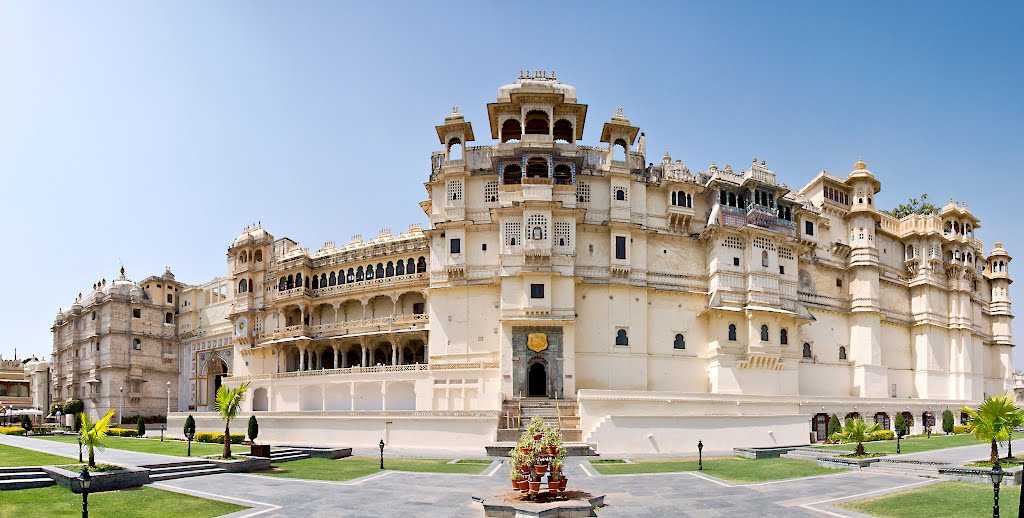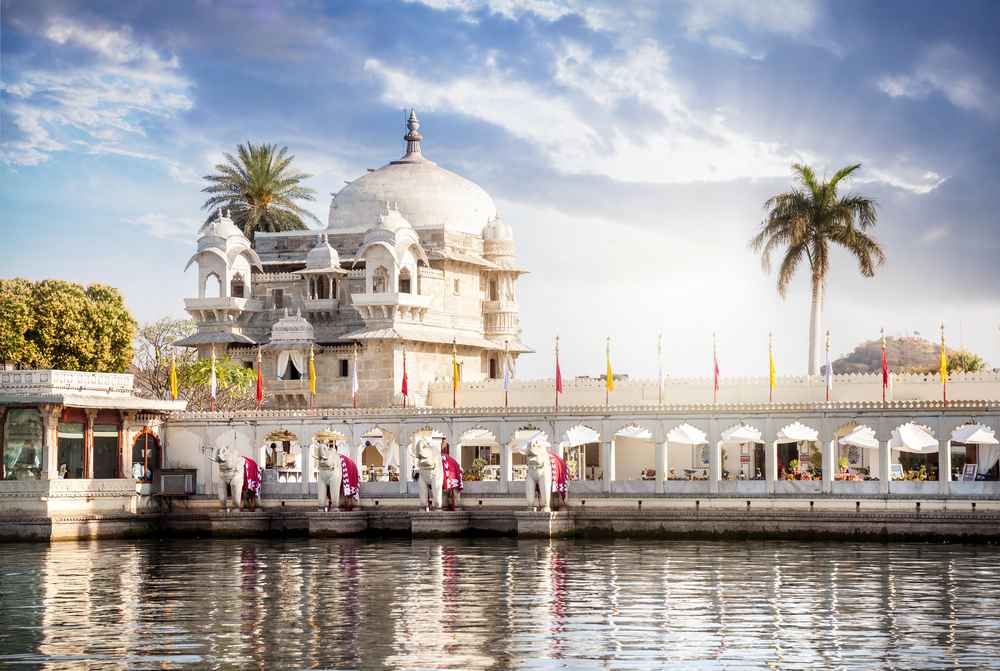Udaipur –
Udaipur is the glimmering star on Rajasthan’s map. Its many lakes and its environs soaked in Mewar history are attractions that people from all over the world come to visit. There are many places to visit in Udaipur and many around it. There is a reason the city is known as the Venice of the East. The city of lakes Udaipur is located around azure water lakes and is hemmed in by lush green hills of Aravallis. The famous Lake Palace, located in the middle of Lake Pichola is one of the most beautiful sights of Udaipur. It is also home to Jaisamand Lake, claimed to be the second largest man-made sweet water lake in Asia. The beautiful City Palace and Sajjangarh (Monsoon Palace) add to the architectural beauty and grandeur of the city. The city is also known for its profusion of zinc and marble.
Places To Visit In Udaipur –
The City Palace in Udaipur in the state of Rajasthan has a lot in its store to reveal the age-old history it possesses. The royal building is a huge complex with plenty of rooms and pillars inside. It took more than 300 years to complete the structure properly. The lake Pichola nearby is the highlight when you get ready for a tour of the greatest places to visit in Udaipur. The City Palace towers over Lake Pichola. The balconies, cupolas, and towers of the palace give a wonderful view of the lake and the surrounding city.. The main part of the palace is now preserved as a museum displaying artifacts.

Jagmandir is a palace built on an island on the Lake Pichola. Also called the ‘Lake Garden Palace’, the construction for this began in 1620 and was completed around 1652. The royal family used the palace as its summer resort and for hosting parties. In here you will find Gul Mahal, Darikhana, Garden Courtyard, Bara Patharon ka Mahal, Zenana Mahal, and Kunwar Pada ka Mahal. Jag Mandir is the main palace and it includes the Gul Mahal.

The Lake Palace in Udaipur is located on the Jag Niwas Island on a sprawling 1.5 hectare land. This magnificent structure was built on the Lake Pichola by Maharana Jagat Singh in 1734. Once a summer palace for the royalty of Udaipur, it has now been converted into a heritage hotel. Still retaining the grandeur, it resembles a fairy tale kingdom. Enhancing the magical aura are the rippling waves and beautiful sunset. The palace highlights include fountains, gardens, pillared terraces, painted mirrors, pink stone work, lotus leaves and cusped arches.
Saheliyon ki Bari in English means the ‘garden of maids’. This garden represents a green retreat of Maharana Sangram Singh in the desert lands and was built in the 18th Century for the royal ladies of Mewar. It is situated on the banks of the lake Fateh Sagar and is one of the stunning places to visit in Udaipur
This is one of the most important places to visit in Udaipur. Lake Pichola is the reason we call Udaipur the ‘City of Lakes’. Built in 1362, and extending 3 miles in length and 2 miles in breadth, this lake is an essential part of Udaipur and far by its best feature. Astonished and amazed by the beauty of Lake Pichola, Rudyard Kipling once wrote: “If the Venetian owned the Pichola Lake, he might say with justice, `see it and die'”. Take Kipling at his word and visit Lake Pichola when in Udaipur, both in the day and at night.
Udaipur Tour Packages –
Udaipur is one of the most attractive destinations in Rajasthan. The variety of attractions, palaces , forts, lakes in the city makes it a dream destination for tourists. Just as you will find places with historical importance in Udaipur , there are also places in Rajasthan that boasts a lot of natural beauty.
However, the best way to ensure a hassle free and great tour is to get it from a tour operator which has a high level of expertise and experience in this sector. We are a leading tour operator company. Visit our website and book customize tour packages as per your demand. We never compromise in our service.
Here are some our Best tour packages for Rajasthan . Choose them any and explore the rich culture of Udaipur Rajasthan with us.
Majestic Rajasthan Tour
Udaipur Forts & Temples Tour
Udaipur Sightseeing Packages
Udaipur Holidays Tours
